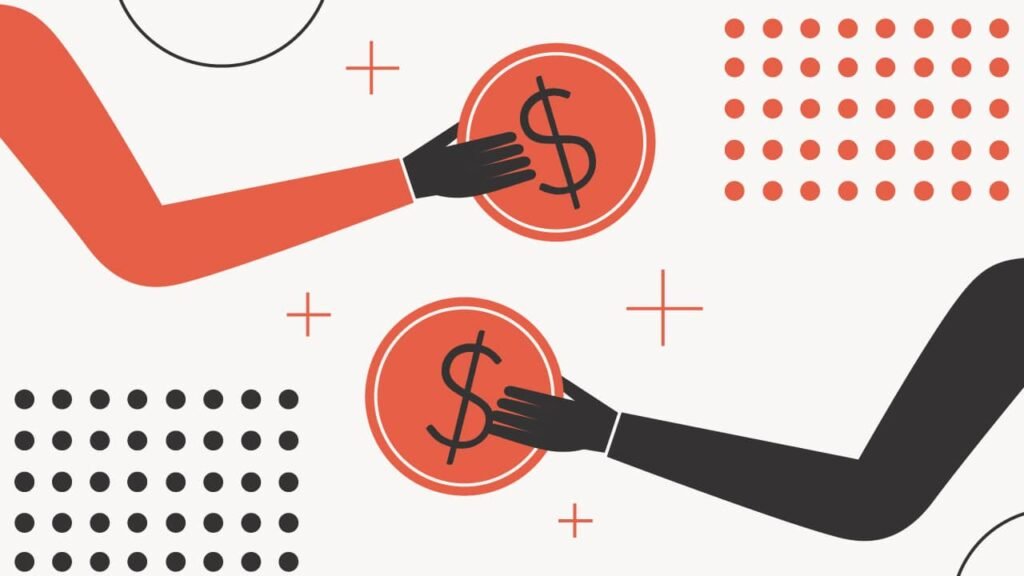Key Points
As college costs continue to rise and federal parent loan options continue to change with the Big Beautiful Bill, more families are turning to private student loans to close the gap between financial aid and the full cost of attendance. For many parents, shopping for a student loan becomes a balancing act: finding the lowest rate while making sure the loan terms don’t create problems down the road.
It’s easy to focus on the interest rate alone. But parents often overlook other key features, such as payment flexibility, cosigner release policies, and default protections, that can make a big difference in the long run.
In partnership with Abe student loans, let’s talk about the key features that parents often miss when comparing student loan options – beyond just the interest rate. Abe’s unofficial motto is “what would the perfect student loan be”, and they are consistently working towards that with low rates, no application or origination fees, multiple repayment options3, and more. Check out Abe student loans here and get a quote >>
Would you like to save this?
Beyond The Rate: What Else Matters
Interest rates get the most attention, but the fine print often determines how stressful a loan becomes over time. For example, many private lenders charge fees for origination, late payments, or even forbearance requests. Abe does not. The company eliminates all fees: no application charges, no origination fees, and no penalties for late payments or using a debit card.
Abe student loans also stand out for their repayment options. With five loan terms (5, 7, 10, 15, and 20 years) 4 and four different repayment structures3, families can tailor a loan to match their budget. Those who can afford to make payments while the student is in school can significantly cut down on the total interest paid.
Cosigner Release
Most student loans require a creditworthy cosigner, usually a parent. But few parents realize how long they’re often tied to the loan, or if they can ever get removed.
Many lenders require multiple years of full, on-time payments before they’ll even consider releasing a cosigner, if at all. In contrast, Abe allows borrowers to apply for cosigner release after just 12 months of on-time principal and interest payments. 1
This shorter timeline is a major advantage for families who want flexibility. It reduces financial entanglements and gives students a faster path to financial independence.
Note: applying for cosigner release doesn’t mean approved for it. The borrower still has to be able to qualify for the loan on their own!
Protection When Life Happens
College isn’t always a straight line. Students may leave school, face unexpected health issues, or struggle to find a job after graduation. These situations can make student loan payments challenging. That’s where borrower protection features matter.
Abe offers six payment relief options that address real-life disruptions. Borrowers can request deferment for medical internships or residencies,5 job loss,6 serious illness, or family leave7. The company also provides extended repayment terms for those who need to lower their monthly costs.8
One of Abe’s standout features is In-School Default Protection.2 If a student opts into interest-only or flat monthly payments while in school but falls behind, Abe automatically shifts them into a deferred payment program instead of letting the loan default. We’ve never seen another lender offer this feature.
Looking At The Big Picture
Families should treat student loan shopping like any other major financial decision. That means looking at more than just the interest rate – but always keeping a focus on costs. Parents should ask about fees, grace periods, repayment flexibility, and how easily the student can take over full responsibility for the loan.
Abe’s combination of great rates, no fees, early cosigner release, and borrower protections gives families more control and fewer surprises. And while every borrower’s needs are different, a loan that makes repayment more flexible and predictable can reduce stress after graduation.
Check out Abe student loans here and get a quote >>
Before applying for a private student loan, DR Bank and Monogram LLC recommend exhausting all financial aid alternatives including grants, scholarships, and federal student loans.
AbeSM student loans are made by DR Bank, Member FDIC (“Lender”). All loans are subject to individual approval and adherence to Lender’s underwriting guidelines. Program restrictions and other terms and conditions apply. LENDER AND MONOGRAM LLC EACH RESERVES THE RIGHT TO MODIFY OR DISCONTINUE PRODUCTS AND BENEFITS AT ANY TIME WITHOUT NOTICE. TERMS, CONDITIONS AND RATES ARE SUBJECT TO CHANGE AT ANY TIME WITHOUT NOTICE.
1. A cosigner may be released from the loan upon request to the Servicer, provided that the student borrower has met certain credit and other criteria, and 12 consecutive monthly principal and interest payments or lump sum payments equal to 12 monthly principal and interest payments have been received by the Servicer during any 12-month period. While a loan is in a reduced repayment plan or while a request for a reduced payment plan is pending, borrowers are not eligible to apply for cosigner release.
2. Borrowers with Interest Only or Flat Payment Repayment loans that reach at least 90 days delinquent during an in-school deferment period will automatically have their repayment option transitioned from the Interest Only or Flat Payment Repayment option to the Full Deferment Repayment option. Under these circumstances, the interest rate on the loan will automatically increase to match the interest rate associated with the corresponding Full Deferment loan. For an Interest Only loan, the interest rate will increase by one percentage point (1.00%). For a Flat Payment Repayment loan, the interest rate will increase by one quarter of one percentage point (0.25%). Credit reporting prior to the transition of a loan to the Full Deferment repayment option will remain on your record. Any unpaid accrued interest at the end of an in-school deferment period may be capitalized in accordance with the Credit Agreement.
3. The Flat Payment Repayment option is only available on loans of $5,000 or more.
4. The 15- and 20- year term and Flat Payment Repayment option (paying $25 per month during in-school deferment) are only available for loan amounts of $5,000 or more. Making interest only or flat interest payments during deferment will not reduce the principal balance of the loan. Payment examples (all assume a 14-month deferment period, a six-month grace period before entering repayment, no auto pay discount, and the Interest Only Repayment option): 5 year term: $10,000 loan, one disbursement, with a 5-year repayment term (60 months) and a 9.30% APR would result in a monthly principal and interest payment of $209.04. 7-year term: $10,000 loan, one disbursement, with a 7-year repayment term (84 months) and a 8.50% APR would result in a monthly principal and interest payment of $158.36. 10-year term: $10,000 loan, one disbursement, with a 10-year repayment term (120 months) and a 8.35% APR would result in a monthly principal and interest payment of $123.18. 15-year term: $10,000 loan, one disbursement, with, a 15-year repayment term (180 months) and a 8.30% APR would result in a monthly principal and interest payment of $97.31. 20-year term: $10,000 loan, one disbursement, with, a 20-year repayment term (240 months) and a 8.38% APR would result in a monthly principal and interest payment of $86.02.
5. With the Full Deferment Repayment option, you may be eligible to defer principal and interest payments for a period of up to twenty-four (24) months, and further additional deferment from payment of principal but not interest for a subsequent period of up to twenty-four (24) months, depending on length of enrollment, as long as the student borrower is enrolled at an approved school or in a medical internship or residency program. With the Interest Only Repayment option or the Flat Payment Repayment option, you may be eligible to defer payment of principal but not interest for a period of up to forty-eight (48) months, depending on length of enrollment, as long as the student borrower is enrolled at an approved school or in a medical internship or residency program. Any accrued interest may be capitalized at the end of this additional deferment period.
6. Available in increments of no more than three (3) months, for an initial maximum period of twelve (12) months. Following the initial twelve (12) month period, borrowers may be eligible for an additional twelve (12) months of unemployment protection, awarded in three (3)-month increments, by making twelve (12) consecutive on-time principal and interest payments between each three (3)-month increment of unemployment protection. During any period of unemployment protection, principal and interest payments are deferred and the interest that accrues during the unemployment protection period may be capitalized at the expiration of such period in accordance with the Credit Agreement. The number of months of unemployment protection utilized counts toward the total number of months of forbearance permitted on the loan. The repayment term will be extended equal to the number of total months of unemployment protection applied to the loan.
7. Medical Forbearance is available to assist borrowers unable to pay their loan due to an existing and persisting medical condition that is not expected to be permanent, and that prevents them from engaging in a level of work performed for pay or profit that involves doing significant physical and/or mental activities. Medical Forbearance is granted in increments of no more than three (3) months, for a maximum of twelve (12) months during the life of the loan. To qualify for Medical Forbearance, a physician must certify that the borrower has an existing and persisting medical condition or the borrower must provide the FMLA approval notice “Designation Notice, form WH-382”.
8. If after utilizing all other payment relief options offered under the program, the borrower is still having trouble making monthly principal and interest payments, the servicer may extend the repayment term on the loan by sixty (60) months upon request. Following the term extension, the loan will be reamortized resulting in a reduced monthly principal and interest payment amount. The Borrower will continue to be billed for principal and interest payments on the loan.
AbeSM is a registered service mark of Monogram LLC.
Monogram LLC is not an affiliate of DR Bank.
Monogram LLC (NMLS #2542102) NMLS Consumer Access
Editor: Colin Graves
The post What Parents Should Know When Comparing Student Loans appeared first on The College Investor.

